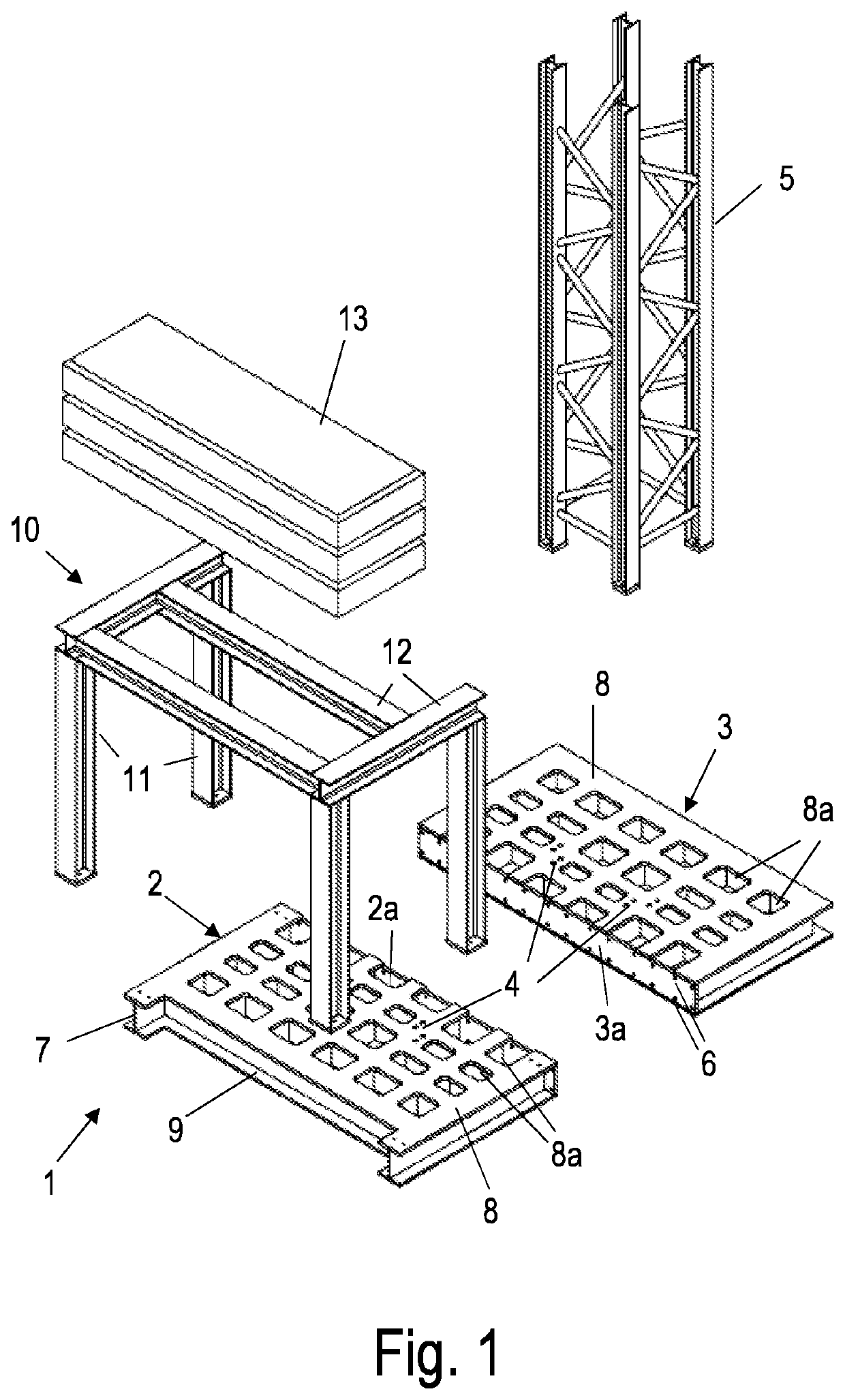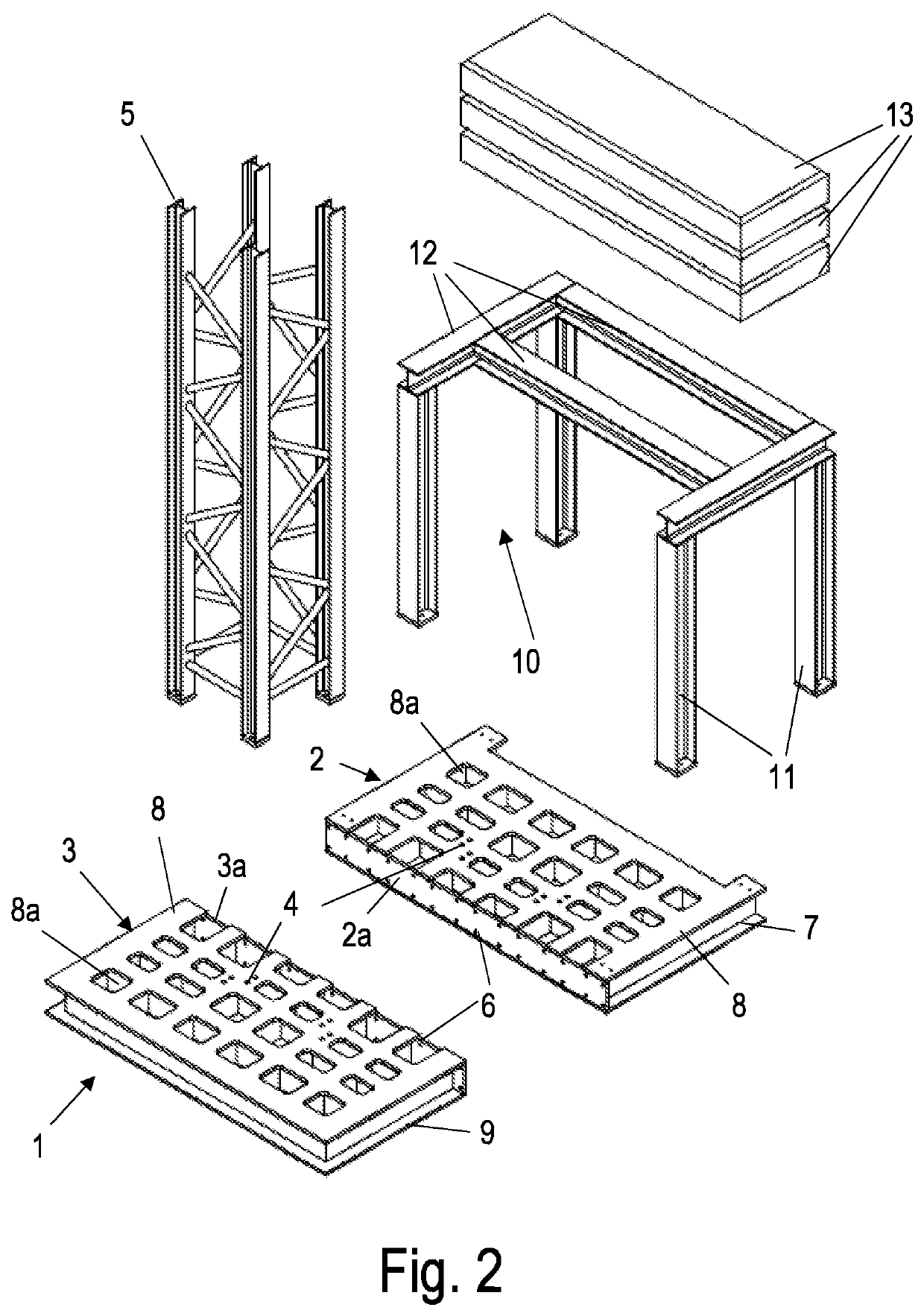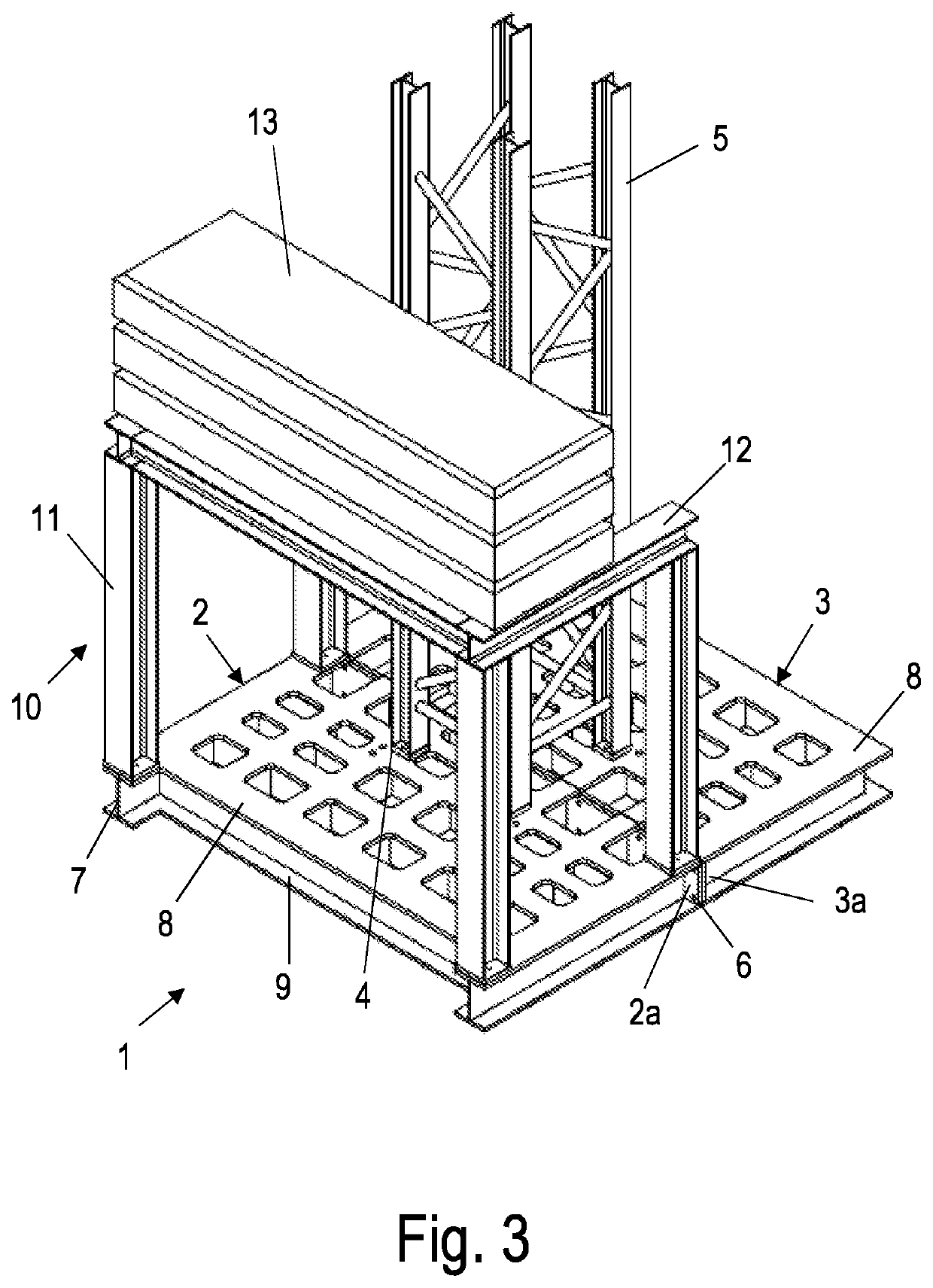Mobile foundation for tower cranes and fast-erecting cranes
a technology for mobile foundations and cranes, which is applied in the direction of propulsion parts, transportation and packaging, and electric propulsion mounting, etc. it can solve the problems of uneconomic, uneconomic erecting crane foundations, and uneconomic concrete foundations, etc., and achieves low weight, and high strength and rigidity.
- Summary
- Abstract
- Description
- Claims
- Application Information
AI Technical Summary
Benefits of technology
Problems solved by technology
Method used
Image
Examples
Embodiment Construction
[0020]The exemplary embodiment depicted in the FIGS. 1 to 4 of the inventive mobile foundation for tower cranes and fast-erecting cranes comprises two floor elements 2, 3 made from metal, which may be releasably connected to one another, in particular screwed to one another. The floor elements have anchoring devices 4 for a crane tower 5. The anchoring devices 4 for the crane tower 5 are configured as through-holes, optionally having protection elements against unscrewing of nuts, they may, however, alternatively also comprise holding elements, in particular clamps, attached to the floor elements 2, 3. The crane tower is not an integral part of the present invention but rather a part of a tower crane or fast-erecting crane, for which the foundation 1 forms a temporary foundation.
[0021]The floor elements 2, 3 have side walls 2a, 3a, at which they may be connected to one another. For this purpose, there are provided in the side walls 2a, 3a through-holes 6, wherein the positions of th...
PUM
 Login to View More
Login to View More Abstract
Description
Claims
Application Information
 Login to View More
Login to View More - R&D
- Intellectual Property
- Life Sciences
- Materials
- Tech Scout
- Unparalleled Data Quality
- Higher Quality Content
- 60% Fewer Hallucinations
Browse by: Latest US Patents, China's latest patents, Technical Efficacy Thesaurus, Application Domain, Technology Topic, Popular Technical Reports.
© 2025 PatSnap. All rights reserved.Legal|Privacy policy|Modern Slavery Act Transparency Statement|Sitemap|About US| Contact US: help@patsnap.com



